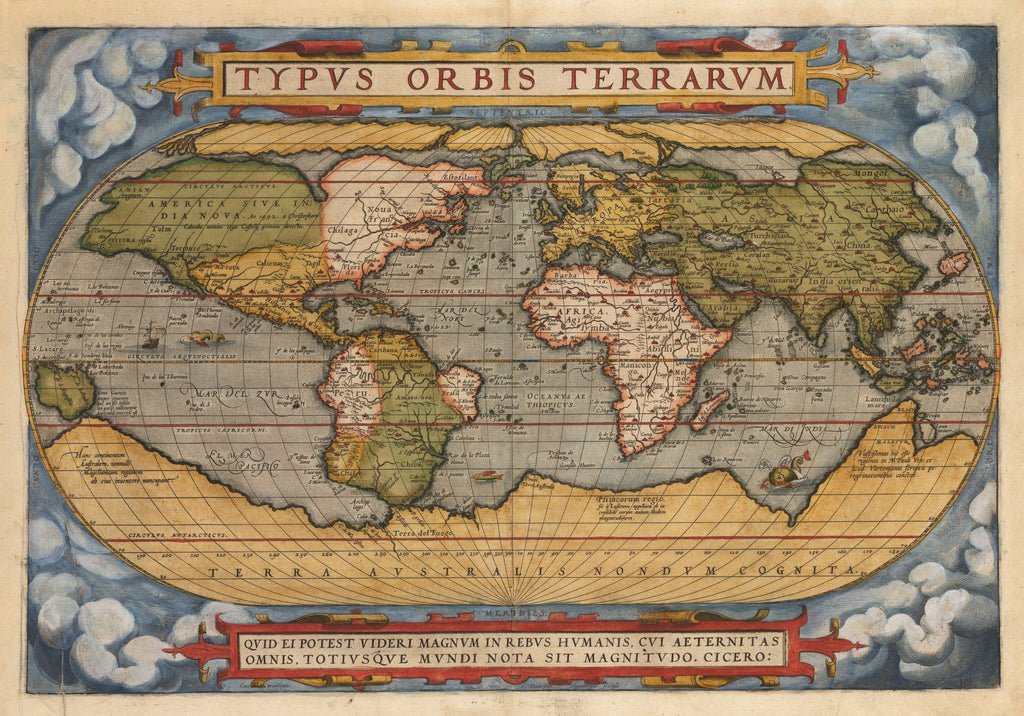

Very numerous were the smaller editions and extracts in the various languages. In 1593 there were 137, in 1612 no less than 166 maps, while the list of authors reached 183 for the time up to 1595 antiquated maps were replaced by more modern ones, or changed according to the more accurate reports forwarded for the most part by missionaries, and it soon appeared not only in the Latin language, but also in Dutch, High German, Italian, and French translations. Later on this "Theatrum" was enlarged and improved. As concerning many of these cartographers we have no other knowledge than that contained in this catalogue, and as Ortelius utilized but forty-six of the maps mentioned by him, this little list is today one of the most important sources for a history of cartography. More important for us than this dictionary is the appended catalogue of maps ( Catalogus auctorum tabularum geographicarum), in which appear the names and works of ninety-nine cartographers who lived before 1570. To the atlas he appended a geographical dictionary which contained both the ancient and modern names. Considering geography as an eye of history ( historiœ oculus), he usually added the ancient historical names of countries and cities to the modern ones. He conscientiously gave credit to the author of maps which were published on a reduced scale by himself. When the name of the author was mentioned on the map, Orteius did not change a line or a name then, but, when the author's name was not given, he resolutely made such changes as appeared to him necessary. Where several maps of one country were available, he chose the most modern and most reliable copy.

Ortelius has combined in this work in a systematic manner all recent maps of the world and separate countries, of which he had heard during his long activity as trader and collector. This work is the "Theatrum orbis terrarum", which appeared in 1570 it was the first great modern atlas, and contained seventy copper engravings on fifty-three double-folio pages. No copy has yet been found of Ortelius's great map of Asia, but in his chief work, which assures him for all time a place of honour in the history of cartography, we find not only his own map of Asia on a smaller scale, but also a number of maps of other cartographers, who otherwise are completely unknown. Bernoulli, "Ein Karteninkunabelnband", Basle, 1905, p. As the only extant copy of this great map is that in the library of the University of Basle (cf. Five years before Mercator published his famous Carta Navigatoria (1569) appeared Ortelius's great eight-leaved map of the world. Meanwhile he did not confine himself entirely to trafficking in charts. This trading in maps was probably one of the chief reasons for his unusually extended trips to Germany, England, Italy, and particularly for his annual visits to the great fair at Leipzig. By purchasing as valuable maps as possible, mounting them on canvas, colouring, and re-selling them, he managed to assist in supporting the family, as may be gleaned from a contemporary letter. When twenty years of age he joined a guild as a colourer of charts. The death of his father in 1535, who had been a wealthy merchant, seems to have placed the family in difficulties, for Ortelius began to trade or peddle geographical charts and maps while still a mere youth. His family came from Augsburg, wherefore Ortelius frequently referred to himself as "Belgo-Germanus". Includes the Catholic Encyclopedia, Church Fathers, Summa, Bible and more all for only $19.99.Ī cartographer, geographer, and archeologist, born in Antwerp, 4 April, 1527 died there, 28 June, 1598.
#Abraham ortelius map full
Please help support the mission of New Advent and get the full contents of this website as an instant download.


 0 kommentar(er)
0 kommentar(er)
